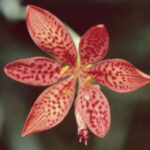When artificial plants or plants need cleaning “paper or plastic?” is a question you may need to ask, but “silk or plastic?” is really most often the appropriate question. Other considerations are the way a plant is constructed (some artificial plants are a matter of wire with silk leaves, others are a more hardy plastic-coated wire and leaf stems fitted over base stems in a “pop-on/pop-off” fashion.
When regular dusting is no longer enough for a plant that has been around for a while most plastic plants can be given a bath in a sink filled with warm water and dishwashing-liquid suds by tipping them upside down and being careful not to allow the container and “fake soil” to be in the water. Using a hand and/or a strong paper towel, gently washing the surfaces of leaves. Empty the water, refill the sink to give the plant a rinse. Empty the sink again, and further rinse the leaves under a stream of gentle running lukewarm or cold water. Blot leaves dry with a paper towel, and it may help to wrap the foliages in a paper towel until it stops dripping a lot of water. Use any appropriate cleaner for the container, depending on whether its a plastic, glass, clay, or metal container. Basket-type/wicker containers can be wiped clean with a damp cloth or paper towel. A light spray of household cleaner usually won’t do much to a basket as long as care is taken to keep the spraying minimal.
Giving plastic plants a bath this way may cause a few leaves to pop off, but you can pop them back on. Of course, over-sized plastic plants can be too heavy for this type of cleaning, so holding a dry paper towel under a section of plant while using a wet paper towel to clean each section can do a more effective job if the plant has to much dust or other dirt on it.
Silk plants and arrangements can be often be cleaned by gently washing them under a soft stream of running, lukewarm or cold water. Check to make sure dusty water didn’t leave stains anywhere. If signs of this show up rinse the plant a little more under gently running water. Gently clean with a paper towel if running water so softly doesn’t remove the mark. Blot the silk foliage with a good-quality paper towel, and – as with the containers of plastic plants – clean the container or base separately.
When the artificial plant has blossoms a little extra care is needed, although plastic blossoms are almost as tough as plastic leaves. Silk plants that have blossoms require the most care and caution but can be gently washed, just as foliage-only silk plants can be as long as there is no glue used anywhere on the plant.
Set wet plants in a location that is airy (and preferably sunny) to dry.
Because plants and containers can be so varied and can come with so many different types of containers its worth mentioning the following: Any berries are that not made of hard, molded, plastic cannot be washed. Sometimes they can be removed before washing. Fabric ribbons can sometimes be removed, washed separately, and replaced. If they can’t be pay particular attention that they don’t collect dusty-water stains. Washing them with a soaked paper towel can help. Glue used on container decorations can usually tolerate the rare and very conservative use of water or liquid cleaner, but using water or cleaner very sparingly and only rarely is is strongly recommended. Other than fabric ribbons, any soft or papery ornaments ornamentation cannot survive becoming wet.
One of the best ways to keep artificial plants from needing a whole bath is to hold the foliage under a gentle stream of cool water every once in a while to get rid of light amounts of dust that may have collected and prevent the accumulation of too much of it between rinsings.





